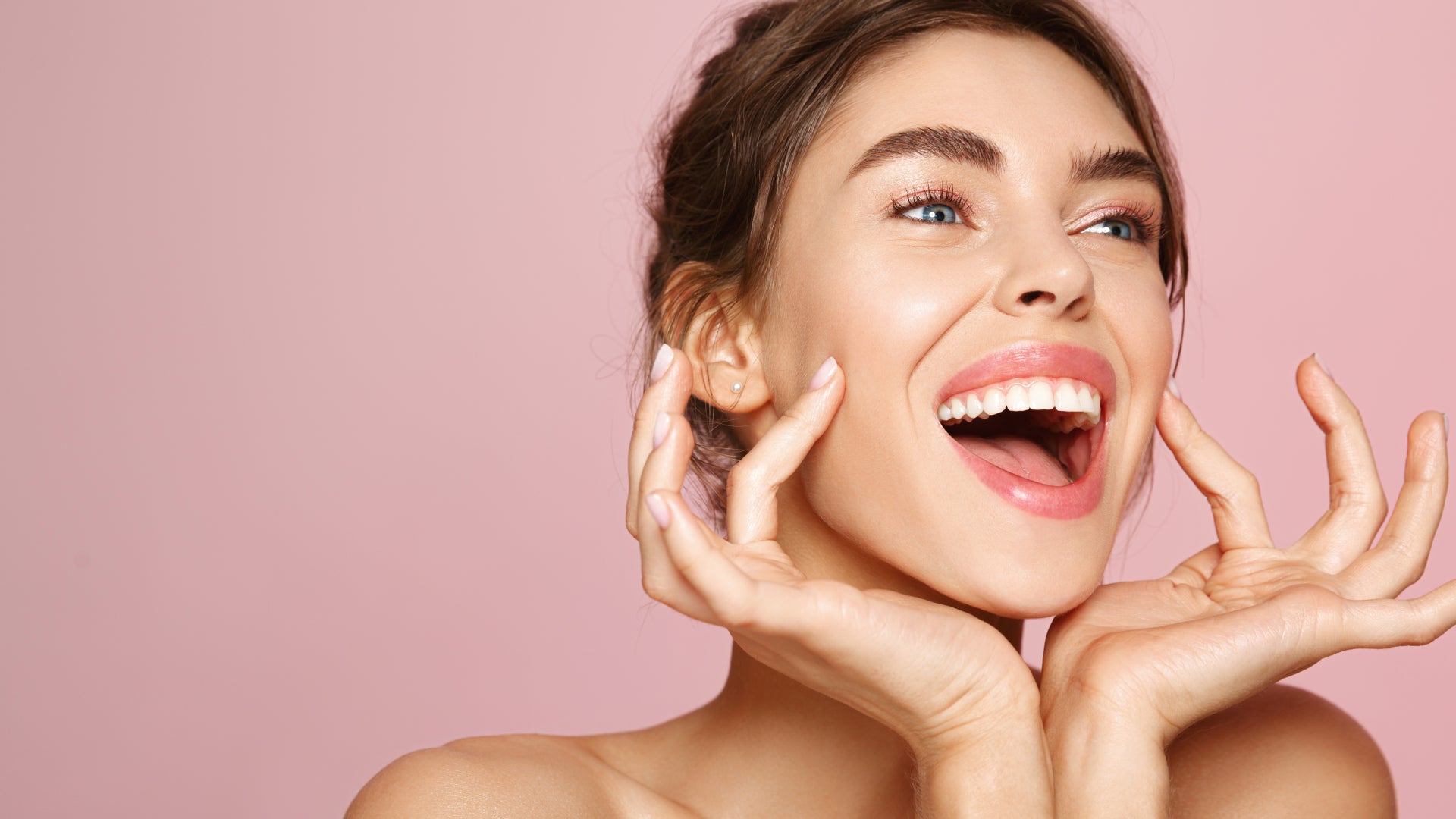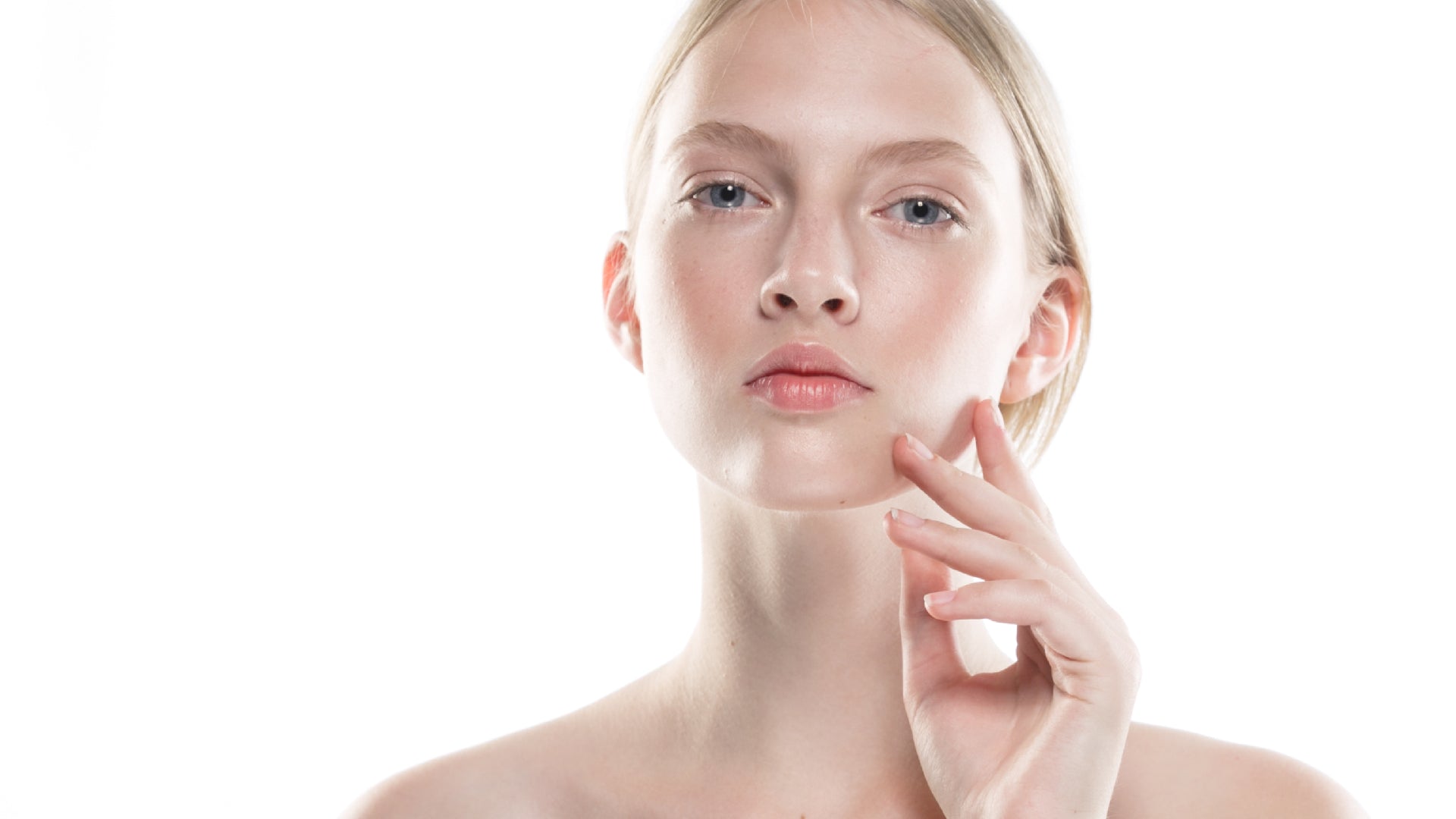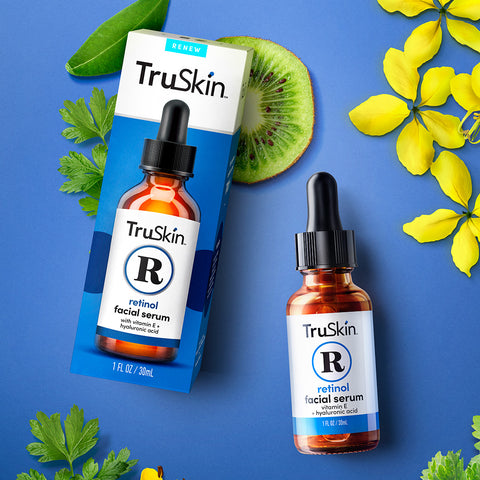
True Radical Honesty From Our Community
What To Do If You Hate Those Fine Lines Around Your Lips
Read MoreAdvice for all of your skin care needs
- all articles
- Acne
- Anti-Aging
- Collagen
- Combination Skin
- Company Announcements
- dry skin
- Exfoliation
- Eye Care
- Facial Redness
- Grooming
- Holidays
- Hyaluronic Acid
- Niacinamide
- Oily Skin
- Retinol
- Sensitive Skin
- Skincare
- Skincare Guide
- Skincare ingredients
- Skincare Routine
- Skincare Tips
- Sun Protection
- Toner
- Vegan Skincare
- Vitamin C
- view all
- Acne
- Anti-Aging
- Collagen
- Combination Skin
- Company Announcements
- dry skin
- Exfoliation
- Eye Care
- Facial Redness
- Grooming
- Holidays
- Hyaluronic Acid
- Niacinamide
- Oily Skin
- Retinol
- Sensitive Skin
- Skincare
- Skincare Guide
- Skincare ingredients
- Skincare Routine
- Skincare Tips
- Sun Protection
- Toner
- Vegan Skincare
- Vitamin C
-
Want to crush lit-from-within skin this spring? Then you’d better start your glow-getting routine immediately.
We don’t know about you, but this time of year is when we generally start thinking about getting our skin prepped and primed for spring. After all, brighter sunshine, longer days and warmer temps mean more time spent outside and so we want our skin to reflect the joys of springtime weather – bright, radiant and full of life.
Don’t get us wrong, we’ve done everything we can to keep our skin moisturized and looking good all winter long, but it’s not always easy, especially after the holidays when the focus has been more on wine and cheese than topical antioxidants and deep moisturization.
So what’s on the ‘must do this’ list for getting skin glowing and ready for spring? Follow these pointers and you’ll be well on the way.
1. Focus On Moisture
Winter is notorious for drying out the skin. You can blame the weather, for sure, because dry, cold air sucks all the hydration from the skin’s uppermost layers. But there are plenty of other things going on that ruin your skin’s moisture mojo. Central heating has to take some responsibility, as must things like hot baths and comfort foods.
If your skin is still feeling somewhat thirsty after battling the elements all winter long, stick with what you’ve likely been doing for the past few months. It’ll pay off eventually – promise. Invest in a humidifier for your bedroom to boost the moisture content in the air as you sleep and make sure your diet includes plenty of water-rich foods like cucumber, watermelon and tomatoes, as well as omega-3 fatty acids found in oily fish and seeds.
As for your skincare routine, we love to layer a hydrating, nourishing serum under moisturizer as this supercharges the skin’s levels of moisture, without it needing to rely on super-heavy creams that can weigh it down.
Hyaluronic Acid Facial Serum is always a smart choice but you could also try our much-loved but often underestimated Peptide Facial Serum which combines three of the best hydrators we know – aloe, glycerin and panthenol – alongside collagen-enhancing peptides. Apply your serum of choice under moisturizer morning and night and your skin will soon have a brighter pep in its step. Plus, it'll feel downright amazing as an extra bonus.
2. Get Friendly With Exfoliating Acids
Chemical exfoliants are awesome for gifting your skin with a smoother (and therefore brighter) surface. Unlike facial scrubs which use grains like fine sand or salt and require physical motion to work, chemical exfoliants simply sit on your skin and go about their business with no effort at all. They work by breaking down the bonds between dead skin cells so they’re able to slough away quicker and more efficiently. Simple as that.
Furthermore, if you choose wisely and opt for a kind-to-skin formulation that harmonizes different kinds of chemical exfoliants, you may even be able to use it every day. Take our 6% AHA, BHA and PHA Liquid Exfoliant, for example. This hard-working, but never too hard-on-your-skin toner accelerates cell turnover with a perfectly balanced blend of glycolic acid (AHA), salicylic acid (BHA) and gluconolactone (PHA). And, yes, we know that might sound like a lot of exfoliating acids for one face, but fear not, we made sure to include just the right amount of each to gently exfoliate without leaving your skin feeling stripped or dry.
It’s the perfect product to give your skin the coveted glow you’ve been seeking since September said goodbye.
3. OD On Vitamin C
One of our favorite skin mottos is ‘when in doubt, reach for topical vitamin C.’ And do you know what? It’s never let us down. In fact, vitamin C is what’s known at TruSkin HQ as the ultimate brightening powerhouse. Not only is it one of the most trusted and tested antioxidants (reminder: antioxidants fight free radicals and keep your collagen levels in check) but it’s also thought to inhibit melanin production which means fewer dark spots, less patchy areas and a more glowy, even-looking complexion all round.
Of course, we don’t literally want you to OD on vitamin C. Some forms can be extremely potent and even a little irritating if you use them too much and apply them too often. So you have to tread carefully. Our advice? Introduce new products slowly into your routine, patch test them first, and stick with sodium ascorbyl phosphate (SAP). SAP is a salt form of the pure stuff which makes it more stable and therefore much gentler.
You'll find vitamin C, and more specifically SAP, in a ton of our skincare formulations so you really can pick and choose depending on your skin’s needs and preferences. Serums are the obvious choice, but since you're likely concentrating on hydration with your facial serum right now, how about trying our Vitamin C Brightening Cleanser instead? With a name like that, it would be rude not to.
4. Think Of Bedtime As TLC Time
You might be under the impression that overnight skincare is a bit pointless when you’re tucked up in bed doing nothing but dreaming of the teenage skin you wish you still had. But on the contrary, your skin does its best repair work when you’re asleep. Cell turnover peaks, collagen production revs up, blood flow increases and your body’s natural antioxidants system kicks in to help neutralize any pesky free radicals that may have built up during the day. Leave your makeup on and go to bed with dirty, unmoisturized skin, however, and all this good stuff becomes basically redundant.
To encourage the magic to happen, cleanse your face and neck gently but thoroughly before bed and start a slow-building retinol regime to naturally accelerate cell turnover and collagen synthesis. Our Retinol Facial Serum has your back here as it’s also infused with vitamin E and hyaluronic acid to boost radiance and hydration both in the short- and long-term.
Mimic your morning routine by always following your serum with moisturizer. In this instance try Vitamin C Deep Hydration Night Cream which contains that all-important, glow-getting vitamin C, as well as ‘nature’s beauty mineral,’ MSM which is one of the most underrated but overachieving ingredients for healthy skin. And we don’t say that lightly.
5. Make Massage A Must
We can think of little better for waking up your skin than a morning massage. The benefits of a facial massage are undeniable. For starters, it boosts blood flow and therefore allows more oxygen and nutrients to rush to the surface of your skin. Hello big-time glow! It also improves lymphatic drainage to help remove toxins away from the skin, reducing things like puffiness and inflammation. Not to mention how relaxing and stress-reducing a morning facial massage can be.
Don’t worry, though, we don’t expect you to learn all the tricks of the massage trade just like that. You can actually do this facial massage quickly and easily in mere minutes. You can also do it while cleansing, or applying facial oil – it totally depends on your jam.
Simply work your chosen product all over your face and neck, using the pads of your fingers, then sweep your fingers down your nose a few times, across your cheeks from the center outwards, then up and around your forehead. After your forehead, take your hands down to the middle of your chin and use sweeping motions to lift the skin up and out towards your ears. Finish with your neck, using the palms of your hands to perform light strokes from the base of your neck up to your jawline. Repeat this as many times as you like, using medium pressure to work the skin and get everything flowing.
Now, how long until March, again?
5 Winter Skin Hacks To Get You Glowing For Spring
read more -
Don’t let fragile, wintry skin and boozy breakouts ruin your skin when the rest of you is ready to rock the party circuit.
It’s the season of champagne, bright lights, festive apps and Santa hats and we, for one, are thrilled. But as much as we love all the fun and fabulousness of the holidays, your skin can take a real beating. Cold, dry weather; warm, steamy bars; a little more alcohol and a lot less sleep can all add up to stress on your skin, compromising your barrier function and throwing your moisture levels out of whack.
Granted, if you have the skin of an angel, you might not notice issues with dryness, shiny foreheads or annoying breakouts during the party season. Well, lucky you because for the other 99.99999 percent of us, party skin often needs an extra bit of TLC to look and feel as high-spirited as our moods.
Here’s how to help get your skin on its merry way this festive season…
One Week Before
To truly get your skin in the right frame of mind for partying, you have to start looking after it early. A good week in advance, in fact. Of course, we know you have a great and consistent skincare routine up your sleeves, period, but there are three things you should really concentrate on in the week up to a big do.
1. Chemical Exfoliation
A great way to kick-start your skin into looking more plump, energized and fresh, is to embrace exfoliating acids. These are the AHAs, BHA and PHAs of the world and include powerhouses like glycolic, salicylic and lactic acids.
Try applying 6% AHA, BHA + PHA Liquid Exfoliant daily to cleansed skin to help boost cellular turnover, improve collagen synthesis and give sluggish skin a real kick in the booty.
2. Facial Massage
A simple facial massage is awesome for improving lymphatic drainage and blood flow. It gets everything moving thus helping to remove toxins while boosting nutrients and oxygen to the surface of the skin – super important for the party season when salty snacks and boozy beverages zap all the life from your skin. Simply work your hands all over your face and neck while cleansing each morning and night, taking your time to lift and smooth the skin in circular motions. You could also invest in a face roller or gua sha tool if they’re your jam.
3. Energizing Serum
While we wouldn’t suggest doubling up on your coffee intake (ever!), adding topical caffeine to your skincare routine will do your complexion all sorts of favors. An incredible antioxidant and with lots of anti-inflammatory powers, caffeine is a fantastic way to counteract all those free radicals that stress, lack of sleep and a poor diet produces. Gold star right there.
Caffeine also energizes your skin by tightening the blood vessels and stimulating circulation. Say hello to brighter, firmer skin and less puffiness and under eye bags as an added bonus. Get involved by applying Caffeine Facial Serum to your skin morning and night.
The Night Before
Big night out tomorrow? Then the following are some super effective ways to ensure your skin is clean, clear, beautifully hydrated and ready to partay!
1. Double Cleanse
We’re not massive fans of double cleansing – it just seems a bit excessive, as a rule. However, do it gently and on the odd occasion, and it can truly help to give your skin a proper ‘clear out,’ leaving you with a smooth foundation for some serious party makeup (if that’s your thing, of course!).
To double cleanse with success, first use an oil-based makeup cleanser to remove makeup, sebum and any other oily stuff from your skin. Then, go for a water-based cleanser to get rid of other surface debris while boosting your complexion with skin-loving ingredients like vitamin C, minerals, aloe vera or plant extracts. We love Charcoal Clarifying Cleanser for a party season detox.
2. Facial Steam
Steaming your face increases perspiration to help remove toxins and boosts blood flow to get oxygen and lots of nutrients flowing to your skin. Win-win. What’s more it’s arguably the easiest and cheapest (aka: free!) way to give yourself the results of a spa-like facial in the comfort of your own home.
Simply place your face over a bowl of recently boiled water (although not freshly boiled, that’ll be too hot!). Place a towel over your head to trap in the steam and hold your face over the surface of the water without getting too close for about 10 minutes. Just remember to always follow with moisturizer. Speaking of which…
3. Layered Hydration
Before bed, baby your skin with as much hydration as it will take – without overloading it with heavy coats of rich creams that might block your pores, of course. That can be disastrous. The best way to crush this? With layers. First up, smooth on a moisture-magnet serum like Hyaluronic Acid Facial Serum then wait a few seconds before applying moisturizer over the top. We have tons to choose from but a current favorite comes in the form of Renewing Longevity Moisturizing Cream which contains skin-reviving bakuchiol (just like retinol, but gentler on the skin!), plus snow algae to boost radiance and protect your skin from any party stress factors!
The Day Of
OK, it’s crunch time. Hopefully, if you’ve kept to your routine and added in a few choice extras, your skin is ready to glow – who needs makeup, anyway!? However, if you still need a little pick-me-up, try these last-minute glow-getting tricks.
1. A Morning Scrub
First things first: don’t overdo it with the exfoliation, people. If you’ve been applying a chemical exfoliant in the run-up to party time, a facial scrub might be a tad excessive. However, if you’ve not had time to get ahead of the exfoliation game, a face scrub is game-changing for instantly smoother, brighter-looking skin. Grab our Vitamin C Gentle Face Scrub as a matter of urgency, and smooth it all over your face and neck, using gentle circular motions to work it all over.
2. Vitamin C
We rate very little above topical vitamin C when it comes to rejuvenating ingredients that get the job done. So, apply the best vitamin C money can buy after cleansing and feel smug in the knowledge that your skin has started off the day right. Sure, it may end the day a little tipsy and full of sugar and salt, but at least you started well and, hey, we have just as many great tricks for hungover skin as we do for party prepping!
Try our Vitamin C Super Serum+ for a punchy pack of skin brightening goodness.
3. Ice Globes
A favorite with makeup artists for prepping celebrities’ skin for red carpet events, ice globes are glass or metal wands that have balls on the ends and are kept in the fridge or freezer. They're kind of like rubbing ice cubes all over your skin without the watery mess or potential skin damage.
Awesome for depuffing the eye area, ice globes also work wonders on facial redness, inflammation and sluggish skin. Cleanse your skin first, then apply serum before working them over the skin for 10 minutes or so. Use upwards movements to lift your skin and add radiance, or downwards strokes to encourage lymphatic drainage and reduce swelling. But make sure you don’t press too hard as this could drag and damage your skin.
Finish with moisturizer and you are ready to, well, get ready!
How To Prime Your Skin For The Party Season
read more -
One wish: to enjoy the tight, gravity-defying skin of 20 years ago. Sadly, it’s not going to happen, so the next best thing? Skincare ingredients that boost collagen and help your skin appear subtly firmer and just a tad more lifted.
Let’s get one thing straight: skincare cannot perform miracles. We’d love to be able to tell you that our new Caffeine Facial Serum can give you the skin of someone 30 years your junior or that our Vitamin C Gentle Face Scrub will eradicate every single one of your much-loathed dark spots after just one use. But we’d be lying. Skincare is awesome, absolutely. And yes, it can 100 percent help to subtly improve the appearance of acne breakouts, wrinkles and aging skin. But it has its limits. And knowing that your favorite moisturizer or prized facial serum can only do so much is crucial. Otherwise, you will always be disappointed. And that’s not what we want for you.
OK, so now this bombshell is out of the way and you understand that skincare ingredients aren’t going to give you an instant facelift or smooth out your laughter lines like fillers or Botox, here’s what they can do.
Choose the right formulation, crafted with thoughtful, clinically-proven ingredients, and skincare can very much improve the look, feel and health of your skin. And if you’ve ever woken up after trying a new serum for the first time, only to be greeted in the mirror by visibly brighter skin, you’ll know exactly what we’re talking about.
So, which ingredients should you pin your hopes on if you’re specifically looking to lift and firm sagging skin? Well, skin starts to go south because of dwindling collagen supplies so boosting collagen production is your first and best bet. Bearing in mind everything we’ve just said about managing expectations, therefore, here are five topical favorites we believe are the most effective for encouraging healthy collagen and helping you on the road to firmer, more toned skin.
1. Peptides
Without blinding you with science, peptides are chemical compounds made from amino acids. They’re very similar to proteins, but where proteins are large molecules made up of long chains of amino acids, peptides are their baby cousins, containing much shorter chains. Why is this of interest? Because due to their similarity, peptides have the smart ability of being able to penetrate the skin where they work like little messengers, signaling for your cells to produce more proteins. And which protein is most abundant in your skin? Yes, you got it, collagen.
In simple terms, applying topical peptides encourages your cells to keep on producing collagen (and elastin, for that matter), thus helping to counteract the skin’s inevitable loss of this vital protein and staving off all that comes with it – namely wrinkles, lines and sagging skin.
Try: Firming Collagen Day Lotion which contains vegan collagen peptides, amongst other skincare powerhouses like ceramides, green algae, vitamin E and aloe.
2. Retinol
When it comes to boosting your skin’s supply of healthy collagen very few topical ingredients trump retinol. Ask your derm or any skincare expert and we bet 1,000 bucks they will agree. So, what makes it so darn good? Well, it’s been studied for decades and it never fails to deliver the same skin-regenerating results. You see, retinol has an innate ability to communicate with your skin at a deep cellular level to encourage a speedier production of collagen and elastin in a bid to heal and strengthen your skin. Simple as. Well, it’s not that simple, but that’s all you really need to know.
Of course, retinol isn’t for everyone – it’s so good, it can be a tad irritating for some skin types – but if you used it slowly and carefully, always patch testing it first, you’ll find it can be a fantastic way to help keep your skin firm and youthful-looking for years to come.
Try: Retinol Facial Serum which has been formulated with hyaluronic acid and vitamin E, helping it to be as gentle on your skin as possible.
3. Bakuchiol
If retinol isn’t for you but you’re looking for something that does almost the exact same thing and offers very similar results, allow us to introduce you to bakuchiol.
One of the newest ingredients to the skincare world (but an absolute keeper unlike other ridiculous ingredients that are all fluff and no function), bakuchiol is nature’s best alternative to retinol. How so? Because it works just like its long-running counterpart, stimulating collagen synthesis and accelerating cellular turnover at a deep, below-the-surface level.
Bakuchiol is extracted from the seeds and leaves of the babchi plant and has been used for centuries in Chinese and Ayurvedic medicine. The reason it’s gained such momentum in Western skincare recently is that, granted, it's very similar to retinol, but more importantly it comes with way fewer unwanted side effects. Of course, its gentle nature means it works more slowly but if you sensitive skin and have patience, bakuchiol is a great choice for fighting the visible signs of aging –including sagging skin but certainly not stopping there!
Try: Rejuvenating Longevity Serum which combines bakuchiol with antioxidant-rich lingonberry stem cells and snow algae.
4. Vitamin C
If you don’t know by now how awesome vitamin C is then we’ve been doing something wrong! In our minds, this antioxidant wonder kid can do no wrong.
Like retinol, vitamin C is one of the most trusted and clinically-proven ingredients in the entire world of skincare. It’s known mainly for providing brightening benefits but never forget what an excellent antioxidant it is, offering the absolute best in environmental protection by neutralizing free radicals before they get a chance to destroy collagen – and believe us, that is exactly what free radicals will do if you don’t get in there first.
But it's not just vitamin C's antioxidant prowess that’s crucial for preventing collagen and elastin breakdown. Its highly acidic nature also works hard to boost your collagen and elastin levels. So there’s that.
Try: Vitamin C Deep Hydration Night Cream which gives your skin a delicious overnight boost of protective vitamin C, along with skin-loving botanical oils like jojoba, rosehip and evening primrose.
5. MSM
Sure, we’re all about vitamin C for president here at TruSkin, but another of our skin-firming favorites comes in the form of methylsulfonylmethane, or MSM to friends like you.
Very well tolerated by even the most sensitive of skin types, MSM is a naturally-occurring form of sulfur. And if you didn’t know, sulfur is one of the most important elements in the human body, often touted as the ‘beauty’ or ‘healing’ mineral.
What does that mean for sagging skin? Yeah, we’re getting to that. And the answer is simple: MSM plays a key role in the production and composition of collagen and keratin. Its anti-inflammatory qualities also help decrease damage to the skin caused by lifestyle aggressors like stress, lack of sleep and a sugar or carb-heavy diet. Oh, and as an extra sidenote, MSM also boosts the body’s production of glutathione which is one of your most important, naturally-occurring antioxidants. Take that free radicals!
Try: Vitamin C Super Serum+ which partners MSM with its bestie, vitamin C. Why do they love each other so? Because vitamin C helps the skin readily absorb MSM, thus doubling up their combined collagen-boosting effects.
The Most Effective Ingredients For Sagging Skin
read more -
We’re back again with our September Spotlight series and today we’re singing the praises of our fabulous Vitamin C Super Serum +. Yet to be acquainted with this super powered brightening serum? Then let us introduce you…
Vitamin C is one of the hardest-working ingredients in skincare. It’s like the Taylor Swift of skincare: never tiring, always delivering.
If you’re a true TruSkin fan you’ll be well aware of our Vitamin C Facial Serum which has been around for over ten years now (gosh, where did the time go?) and continues to brighten skin up and down the country thanks to its harmonic blend of rejuvenating vitamin C, beautiful botanicals and other skin-nourishing ingredients.
But we’re not all Vitamin C Facial Serum this and Vitamin C Facial Serum that at TruSkin HQ. In fact, we have many other incredible facial serums in our arsenal. And one you really should know about is Vitamin C Super Serum +. Because if you’re a C fan, you will be all over this potent, skin-changing treatment.
What Is Vitamin C Super Serum +?
Often thought of as Vitamin C Facial Serum’s more grown-up sibling, Vitamin C Super Serum + is one of the most powerful skin treatments we have in our serum collection. The name ‘Super Serum’ kind of gives it away, right? And we weren't joking when we named it because it really is super by name and super by nature.
Of course, it’s greatest superpowers come from vitamin C which is one of the most trusted skincare ingredients we know, packing a punch against environmental damage and helping to keep your skin bright, radiant and healthy-looking. But vitamin C is really just the tip of the iceberg here, for Vitamin C Super Serum + is powered by so much more.
And if you think it’s going to be heavy and too rich for your skin, think again. It may be concentrated and packed with ingredient heavyweights, but its texture is the exact opposite – lightweight and an absolute joy to use. So good, you’ll want to use it every minute of the day, in fact. Full disclosure: don’t do that. More on how to use Vitamin C Super Serum + safely and effectively to follow…
But First, What Makes Vitamin C Super Serum + Different From The Rest?
1. It contains a special type of vitamin C called sodium ascorbyl phosphate
Just like the Vitamin C Facial Serum (and all of our vitamin C products, actually), our Super Serum + doesn’t contain pure vitamin C (l-ascorbic acid). Wait… what? Ha, of course it contains a certain type of vitamin C, just not the pure stuff. Why? Two reasons. One, we believe it’s way too potent which, sure, that can be a good thing. Until it isn’t. The hard truth is that many skin types can’t handle pure vitamin C as it’s kind of irritating – especially if you have sensitive skin.
Secondly, pure vitamin C is very unstable which means it breaks down when it’s exposed to light and air and thus loses efficacy. Which is kind of annoying.
Instead of l-ascorbic acid, we load up our vitamin C formulas with sodium ascorbyl phosphate (SAP) which is a salt form of the original. This little gem is much more stable and longer-lasting, plus it’s way gentler on your skin. But don't worry, it's still packed with all the same benefits. It's just better. We think so, anyway.
2. Retinol and salicylic acid add further power to this potent blend
As if the mighty forces of vitamin C weren’t enough to power up this serum, it also comes chock full of other skincare greats. Do retinol and salicylic acid mean anything to you?
Some skincare experts scoff at the thought of using vitamin C and retinol together and, true, if you try cocktailing them at home, you could end up with disastrous results. However, when they’re blended thoughtfully and smartly by the experts (that’s us, btw!) they team up perfectly to help smooth and brighten your skin while defending it from environmental damage and supporting collagen production. Say hello to youthful-looking skin for years to come.
When you add salicylic acid into the mix you also get a little gentle exfoliation as an extra bonus. This helps your vitamin C (and retinol) penetrate the skin better and more effectively. And that’s what we call a skincare win-win.
3. Hyaluronic acid and niacinamide help keep skin calm and collected
If all this sounds like a whole bunch of irritation waiting to happen, fear not. Granted, Vitamin C Super Serum+ may include a combination of some of the hardest-hitters in skincare, but it’s also balanced with hydrating, soothing and calming ingredients like hyaluronic acid and niacinamide.
It’s also free of common irritants like synthetic fragrance, silicones, parabens and sulfates which makes it surprisingly gentle on the skin as long as you don’t apply it too frequently.
4. Unlike inferior vitamin C serums, it smells incredible
Of course, the smell of skincare isn’t the most important thing in the world, but we believe it plays a crucial part in the way you experience beauty products. Scent evokes emotions and memories: it can make you feel alive and energized (hello citrus and mint), and it can similarly make you feel sleepy and relaxed (here’s looking at you, lavender and chamomile).
This is why Vitamin C Super Serum+ is infused with a light touch of grapefruit essential oil. Fresh, subtle and uplifting, grapefruit is thought to help reduce stress and balance your mood. And who doesn’t want a piece of that?
How To Make Vitamin C Super Serum + Work For You
The most important thing to remember about our Vitamin C Super Serum + is that you don’t have to use it every day to see incredible results. In fact, we advise against it. Instead, we find that two or three times a week is enough for most skin types to reap the benefits of its four-way age defense formula.
On your days off, alternate it with Vitamin C Facial Serum, or any other of your TruSkin favorites for that matter. Have you tried our NEW Energizing Caffeine Facial Serum, for example? That one's a real goodie and an incredible morning wake-up call for tired, flagging complexions.
Apply a couple of drops of Vitamin C Super Serum + to clean skin and gently pat or smooth it over your face and neck. Give it a minute or so to settle into your skin, then finish with moisturizer. And remember, this juice contains tons of potent, concentrated ingredients which accelerate cell turnover to help you enjoy your freshest skin ever. So don’t ruin all of that hard work by skipping your morning supply of SPF. Generously treat your skin with a broad-spectrum sunscreen every day. And yes, we said every day and we mean it.
Now go and load up on Vitamin C Super Serum + while it's still front of mind!
The September Spotlight: Vitamin C Super Serum +
read more -
Welcome to the first of our September Spotlights in which we highlight some of the best-selling, hardest-working skincare products TruSkin has to offer. And where better to start than with our OG, the mighty Vitamin C Facial Serum?
Some skincare ingredients come and go, but you know you’ve got a good one on your hands when it sticks around and is always up there as one of the most searched skincare ingredients on the internet. Retinol is going nowhere fast (for obvious reasons!) and hyaluronic acid is also among the most highly regarded ingredients for the good of your skin – after all, they’re both clinically proven to offer real results.
And then there’s vitamin C.
Your skin actually contains a good amount of naturally-occurring vitamin C to help support, strengthen and protect it from the daily onslaught of environmental pollution, UV radiation, emotional stress and so on. You see, vitamin C is a powerful antioxidant, which means it helps neutralize free radical damage that builds up from all of the above and, well, life in general. We could go on forever about the awesome effects vitamin C has on your skin but just know this: vitamin C promotes healthy collagen which is super important if you want to age slowly and beautifully. Vitamin C also inhibits melanin production which helps your skin maintain a bright, even tone. Oh, and it’s also thought to aid in healing which is crucial as skin matures and the healing process slows down.
So, why do you need topical vitamin C if your skin has enough of it already? Well, therein lies the key. Sure, you’re born with a decent amount of vitamin C, but as you age and expose your skin to daily aggressors, your levels drop dramatically, causing free radicals to take over and do their absolute worst on the look, feel and overall health of your skin.
Enter Vitamin C Facial Serum
Our first born and still a team favorite, Vitamin C Facial Serum launched in 2013 when we were just a twinkle in the eye of our founders. We knew we were onto something right off the bat, but we could never have predicted just how successful this little plant-powered face serum was going to be. At last count it had clocked up a mighty 145,000 incredible reviews on Amazon – far outweighing the best of the rest, btw – and it continues to be our best-selling product year after year.
Lightweight and easy to use, Vitamin C Facial Serum harnesses the powers of vitamin C (although you probably got that already!) to help eradicate free radicals from your skin and keep it healthy and youthful-looking. However, it’s unlike many other formulations because it works hard, for sure, but is also kind on your skin, meaning you can use it every day without fear of your skin freaking out.
What Makes Vitamin C Facial Serum Different From The Rest
1. We use a special type of vitamin C called sodium ascorbyl phosphate
Topical vitamin C comes in many guises, the most common of which is l-ascorbic acid. Now don’t get us wrong, l-ascorbic acid is great. It’s super powerful and really does what it promises. However, it’s very unstable which means it breaks down when it’s exposed to light and air. This means it loses its powers quickly. Not ideal, we think you’ll agree. L-ascorbic acid can also be kinda irritating on the skin, often causing unwanted effects like dryness, redness and itching.
Sodium ascorbyl phosphate (SAP), however, is a salt form of the pure stuff which makes it a) more stable and longer-lasting, and b) way gentler, but still effective, on your skin. No brainer, right?
2. Our vitamin c serum also contains witch hazel
So what, you may ask? Well, witch hazel is an astringent which combines really well with SAP, helping to reduce inflammation, mop up excess oil and tighten your pores. It also has antioxidant properties to amp up the powers of your vitamin C and give your skin a real boost.
3. MSM helps vitamin C play harder and better
MSM (or methylsulfonylmethane if you really want to know) is a fabulous ingredient that rarely gets the praise it deserves. But we adore it. How so? Well, it plays a vital role in the production of collagen and elastin while also promoting healthy blood flow, fighting inflammation and helping to protect your skin from environmental damage. And that’s not all. It’s also thought to make the skin more permeable, allowing toxins to escape more readily and other active ingredients in your skincare products like vitamin C to absorb better.
4. It contains a nutrient-rich blend of ingredients to soothe and hydrate
If that’s not enough for you, our Vitamin C Facial Serum also contains a bunch of other fantastic ingredients proven to counteract irritation and keep your skin soft, healthy and hydrated. This incredible line-up includes vitamin E, aloe vera, cica, hyaluronic acid, kosher vegetable glycerol and jojoba oil.
How To Make Vitamin C Facial Serum Work For You
One of the most challenging things about topical vitamin C is getting it to go about its business without irritating the skin. But we think we nailed this by using SAP rather than the pure stuff, and combining this with a whole bunch of soothing, hydrating wonder-ingredients as above. And this, IOHO, makes it the best vitamin serum for sensitive skin. It also goes without saying that it’s fabulous for all other skin types, too.
Simply apply a small amount to clean skin in the morning, gently patting or smoothing it over your face and neck. However, don’t use too much – it won’t work harder or quicker, but is just a waste of product! Somewhere between three and five drops of serum should be plenty. And if you find you have more than you need, you can always smooth it over the back of your hands to give them some much-needed TLC.
Give your facial serum a minute or so to settle then apply your moisturizer and sunscreen as normal. You can also apply it at night if that’s your jam – it’s fine to use twice daily if your skin can tolerate it – but we prefer to use vitamin C in the morning and a different treatment (maybe Retinol Facial Serum) before bed. Because, you know, it’s nice to mix things up a little as long as it’s done safely (aka you don’t apply more than one serum at the same time) and smartly (by patch testing first).
Convinced your skin needs a little vitamin C in its life? Then you simply have to try Vitamin C Facial Serum today.
You won’t regret it.
The September Spotlight: Vitamin C Facial Serum
read more -
Because a brighter, glowing complexion is skin goals. But dull, tired, unhealthy-looking skin? No, thank you.
When it comes to things you desire for your skin, bright, healthy-looking, clear and energized top most people’s list. Because even if you have wrinkles, the odd pimple, or a little sagging around your jawline, wide-awake skin trumps them all.
There’s simply no denying it: radiance instantly makes your skin look better. It just does. And although it may feel like an impossible reach, there are many easy ways to up your radiance game. Boosting blood flow to the surface of your skin is a great start, but ridding your face of dulling dead skin cells, boosting hydration and counteracting the damage effects of environmental pollution and UV radiation are also super important if you want to legitimately say a fond farewell to dull, tired skin.
To follow are six simple skincare and lifestyle tricks which are currently on repeat in our quest for brighter, more energized skin. We suggest you get on the same page, pronto.
Make Caffeine Your Friend
Drinking tons of caffeine on the reg might not be the greatest idea for the health of your skin (hi there dehydration), but topical caffeine – the stuff you put ON your skin – is one of the best ingredients for putting a pep in your skin’s step.
For starters, caffeine has an innate ability of tightening the tiny little blood vessels in your skin. This helps stimulate circulation which brings extra oxygen and nutrients to your skin to help it look brighter and firmer. And we don’t know about you, but we’re never going to say no to either of those things.
Caffeine is also a powerful antioxidant, and you know how important antioxidants are in your skincare routine, don’t you? No? Well, to recap, antioxidants help reduce environmental stress on your skin by neutralizing damaging free radicals that form when skin is exposed to things like pollution and UV radiation. Free radicals are killers because they break down important proteins like collagen and elastin causing the strength, suppleness and firmness of your skin to become extremely compromised. The result? Sad skin that looks dull and old before its time.
The even better news is that caffeine has a small molecular structure which makes it a great ingredient for penetrating the skin’s surface and getting deeper into the parts that could really benefit from all of the above. Try applying our new Caffeine Facial Serum every morning before moisturizing to reap all the rejuvenating benefits of caffeine, plus a healthy dose of niacinamide and skin-awakening ginseng. You won’t regret it.
Balance Your Diet
A bright complexion also needs to come from within, so don’t think a diet that’s high in sugar, salt and processed carbs is going to do your skin’s mojo any favors. Because it won’t.
In fact, the quality of the food you eat has a major effect on the look, feel and health of your skin so try to cut down on the bad stuff (c’mon, you know what they are) and switch them out for more skin-friendly foods like fresh fruit and veggies which are high in antioxidants. Beets are particularly awesome for upping your glow game as they contain nitric oxide which is known to have energizing effects on both your skin and your entire body.
And it goes without saying that you should never forget oily fish, seeds and nuts. They're all packed with omega fatty acids which are crucial for fabulous skin.
Start Your Day With A Gentle Face Scrub
We love exfoliation for removing dulling dead skin cells and instantly reviving your skin. It’s just so easy to do and equally as beneficial for the health of your skin. In fact, we rate it up there as the key to glowing skin.
But, of course, you must do it gently and correctly.
One of the best ways to exfoliate and glow up your skin is to grab a gentle face scrub and work this over your face and neck in the shower first thing. Don’t get us wrong, we’re not overly keen on doing this every day (too much exfoliation can overstimulate and thus irritate the skin), but two or three times a week if your skin can tolerate it? Priceless.
For the best wake-up call of your life, we can’t recommend our Vitamin C Gentle Face Scrub enough. The secret to its success lies in yuzu lemon which is a powerful citrus fruit packed with antioxidant properties (see above!). And if that’s not enough for you, we combine it with another of our favorite skin-brighteners, vitamin C, or sodium ascorbyl phosphate to be exact. Work it gently over moist skin after cleansing and rinse thoroughly. Heaven.
Improve Your ZZZs
When you turn in for the night, your skin repairs, regenerates and restores itself in preparation for a new day. Collagen production accelerates, blood flow increases, cell turnover almost doubles and your skin’s natural antioxidant system works extra hard to help repair free radical damage. Miss out on your sleep and you miss out on all this important stuff. And your skin will not thank you for it, resulting in dryness, dehydration and dullness. All the ‘d’s if you will.
If you’re a terrible sleeper, therefore, it’s time to change that. Of course, for some people, that’s easier said than done but if you know what’s causing your sleep to be cruddy, think about ways in which you can change them. Are you glued to your smartphone before bedtime? Stop that. Does your mind go into overdrive as soon as you hit the sack? Try making a ‘to-do’ list earlier in the evening to help clear your mind. Love a bedtime milky coffee? Then make it caffeine-free or, better yet, try a soothing chamomile tea instead.
Oh, and make sure your bedroom is dark, neither too hot nor too cold, and quiet. All these simple tweaks will help you get more quality sleep.
Wake Up Morning Skin With Vitamin C
We mentioned vitamin C earlier but it’s too good not to drive the point home. Because, yes, it’s a total winner for energizing dull skin.
You see, as well as its powerful antioxidant properties, vitamin C helps inhibit melanin production. Why is that crucial for bright, radiant skin? Well, melanin can get a bit wayward thanks to things like sun damage and hormones, and this can cause things like dark spots and an uneven skin tone. Neither of which make for anything close to clear, bright skin.
We have a whole bunch of vitamin C products which are all awesome for rebooting tired skin, but one of our favorite powerhouses is our Vitamin C Super Serum+ which is so good you only need use it two or three times a week to reap its incredible benefits. Its superpowers like in a curated blend of dynamic ingredients including vitamin C, retinol, niacinamide and salicylic acid. Try alternating it with our Caffeine or Vitamin C Facial Serum for truly fabulous results.
Truly, The Best Ways To Energize Dull, Flagging Skin
read more


























